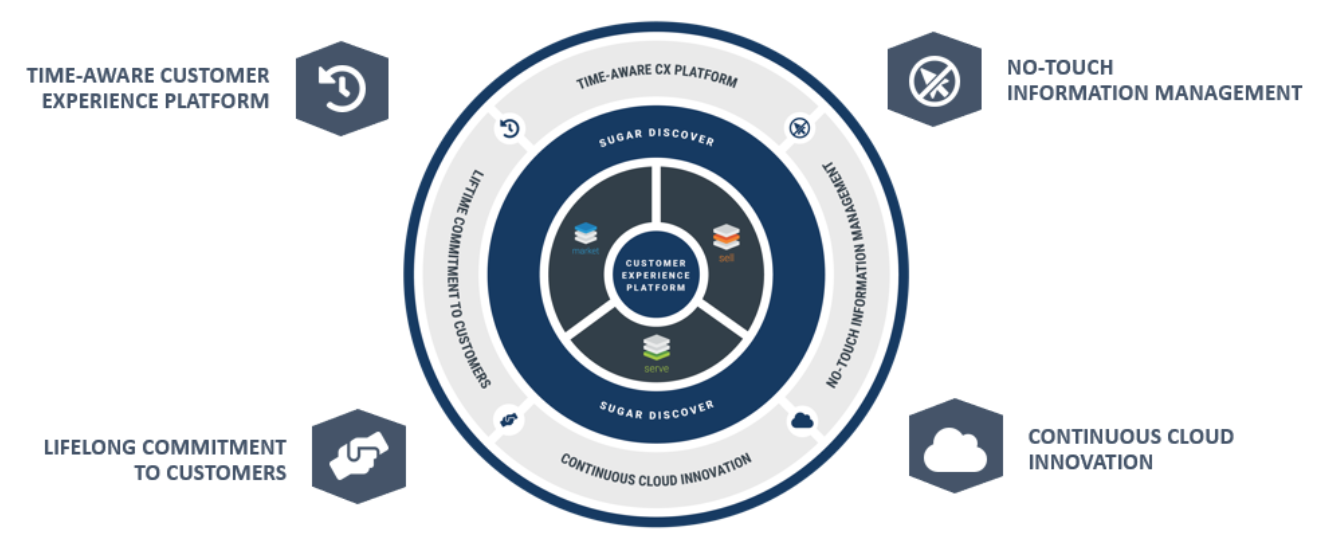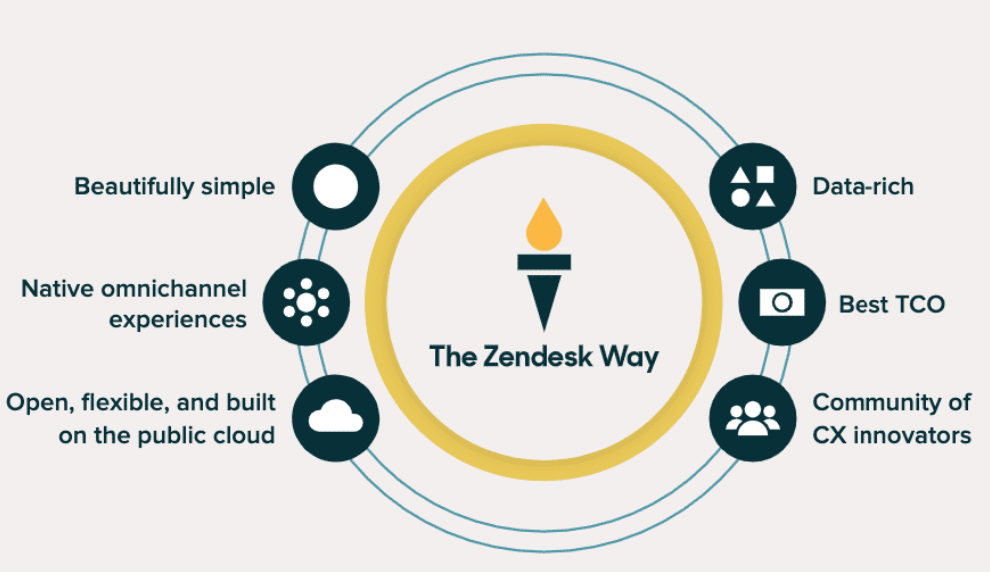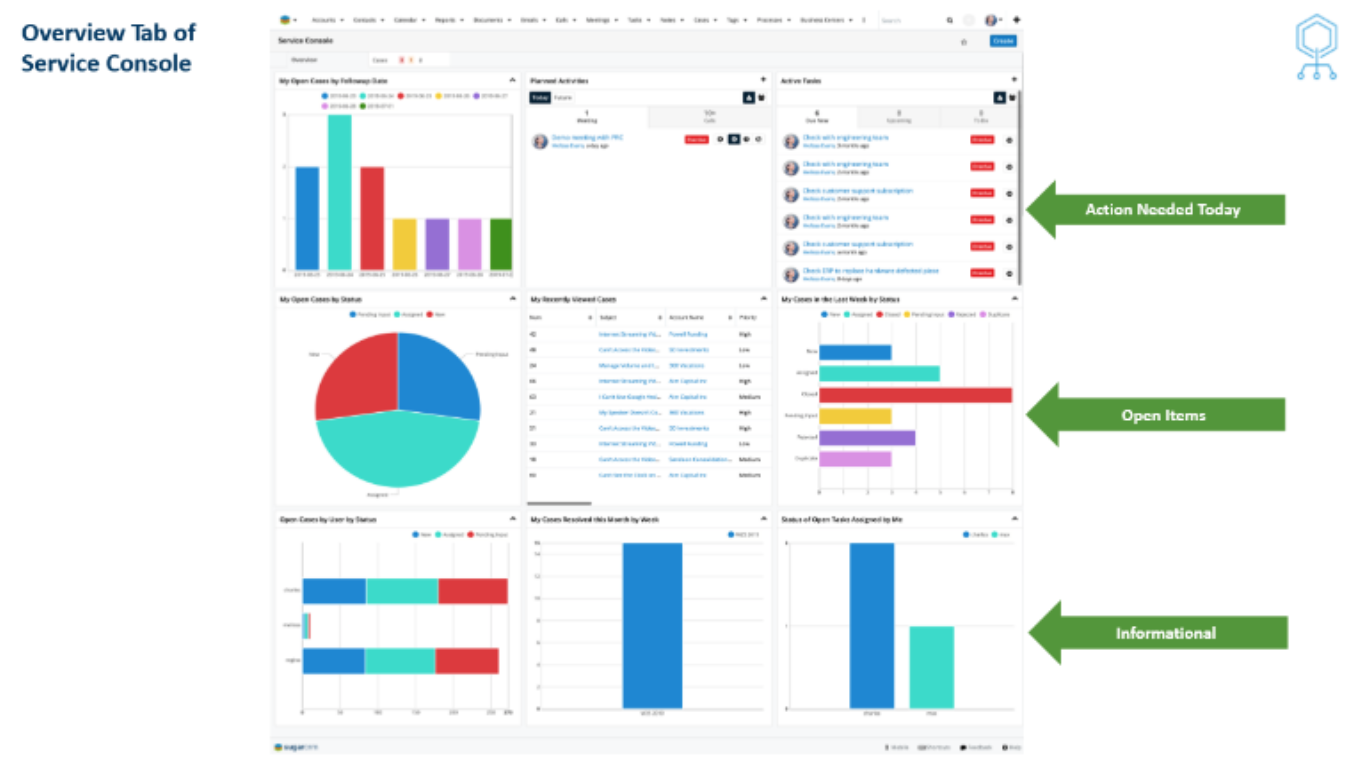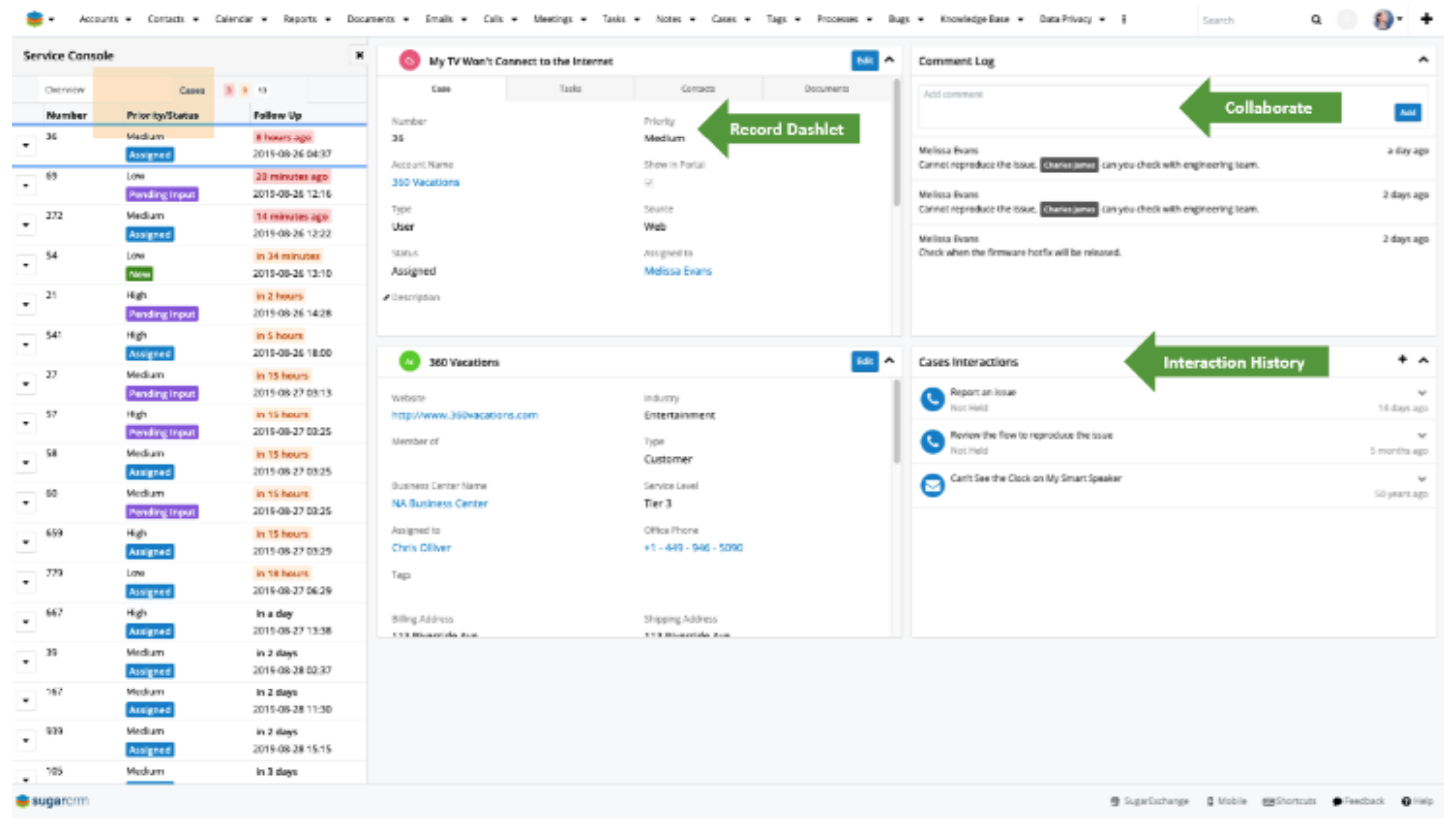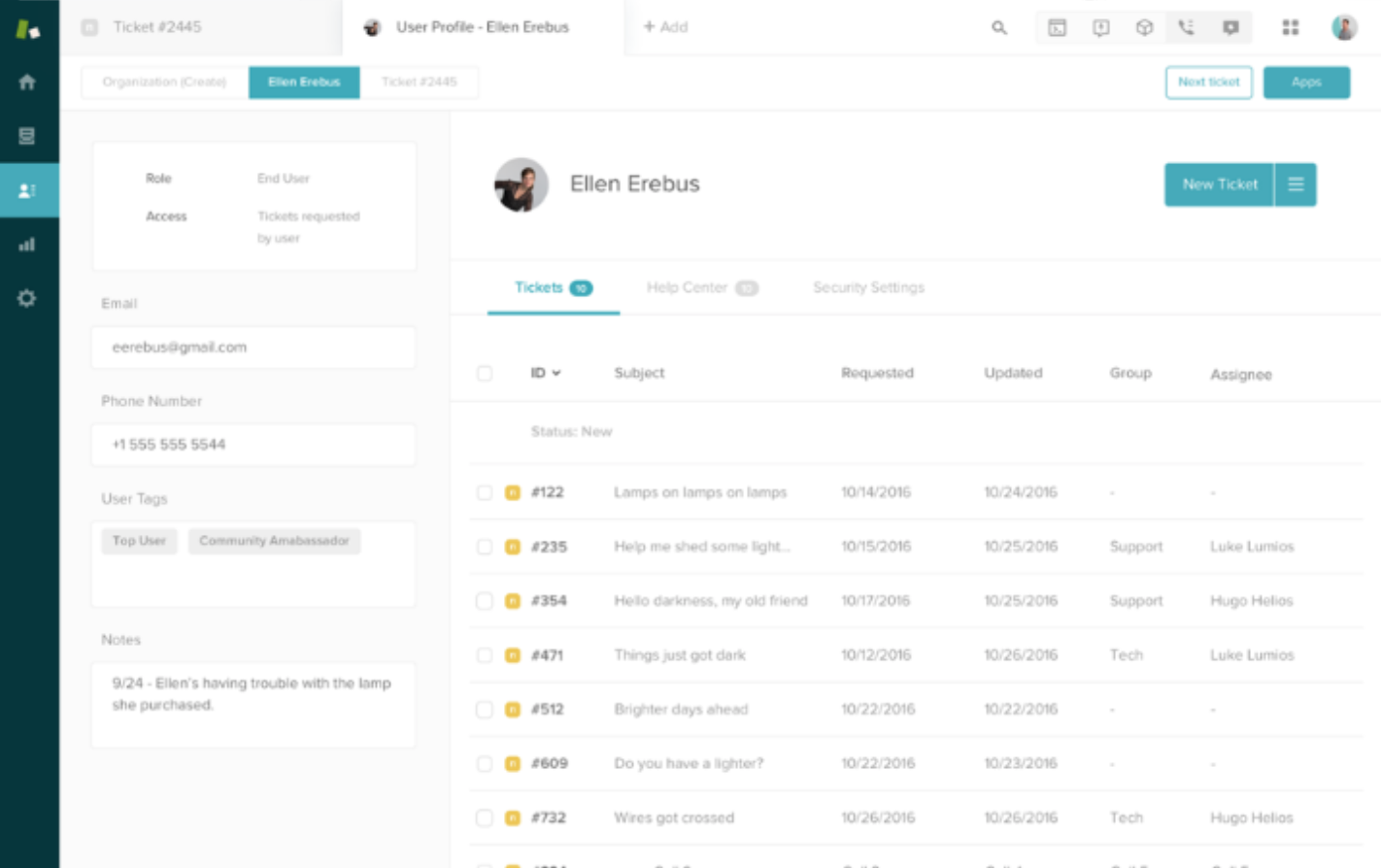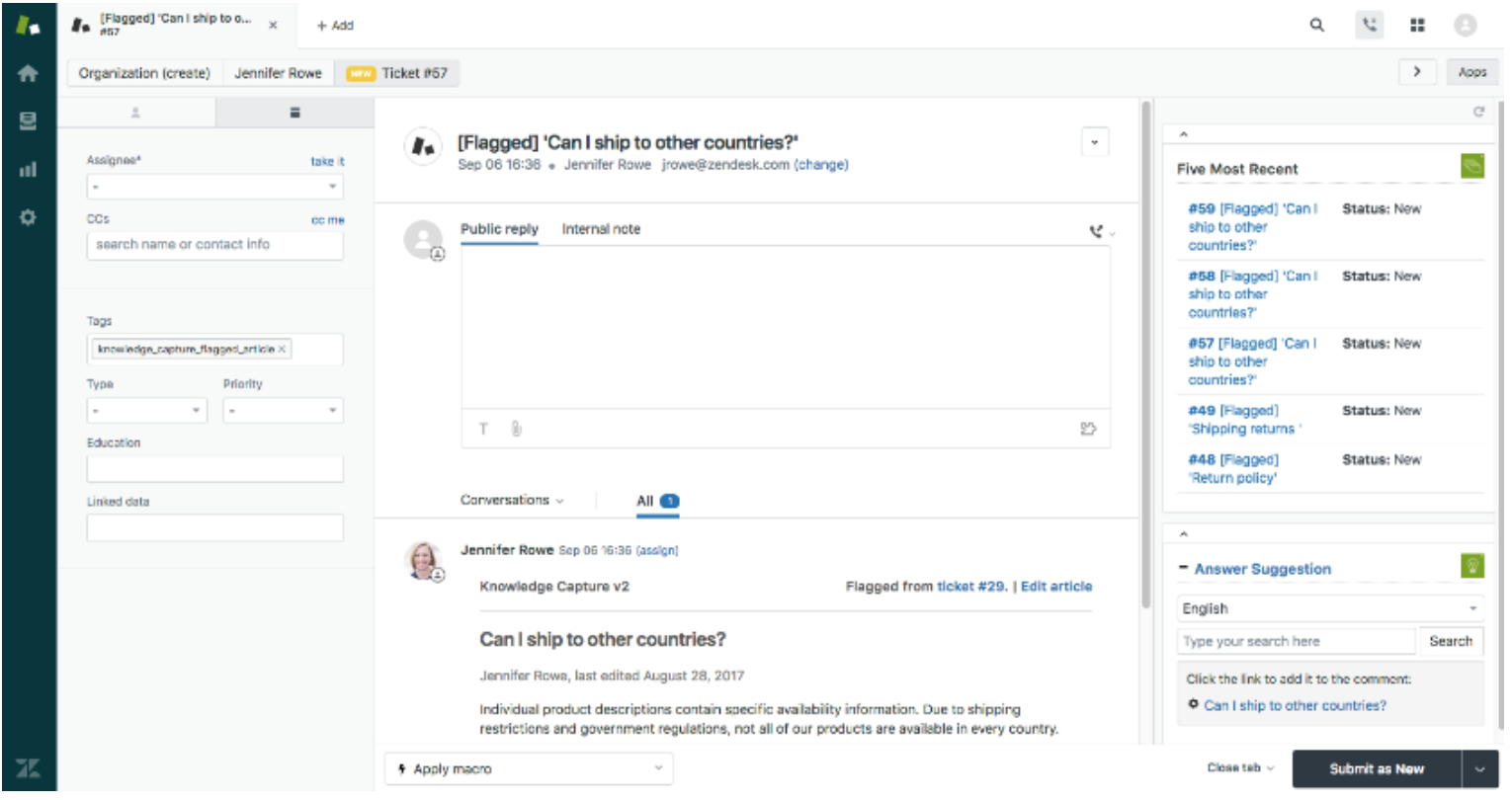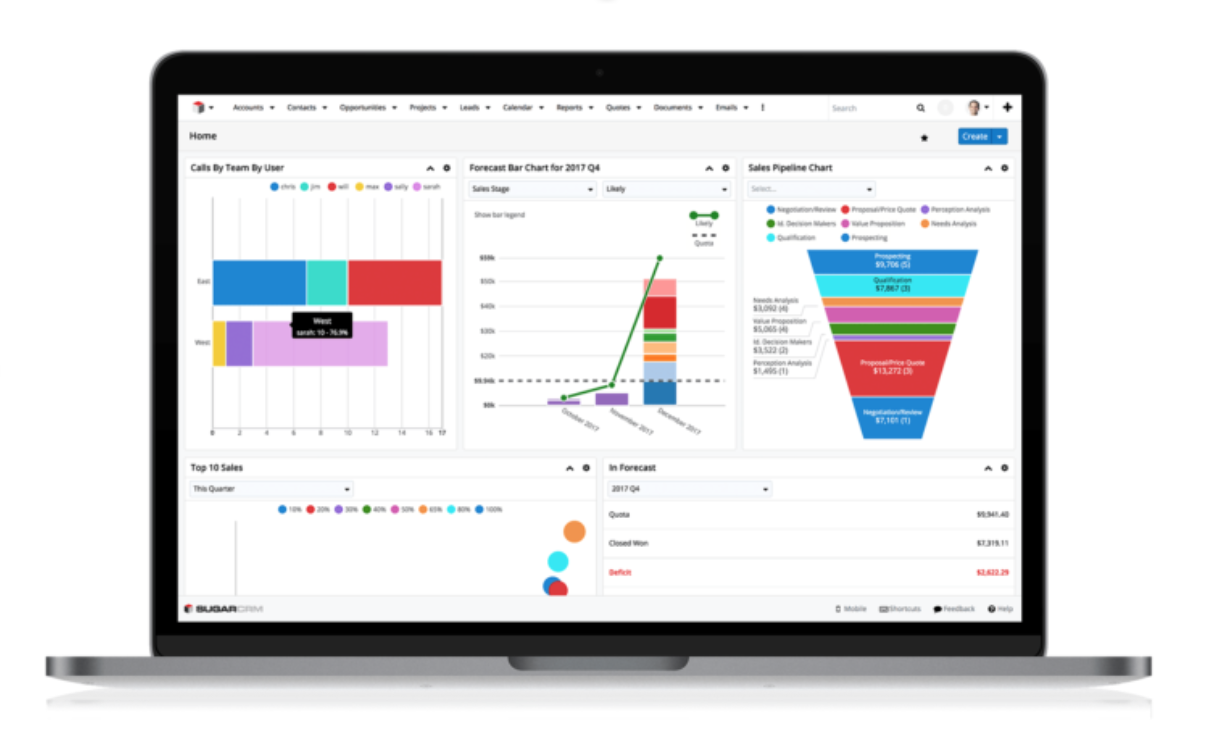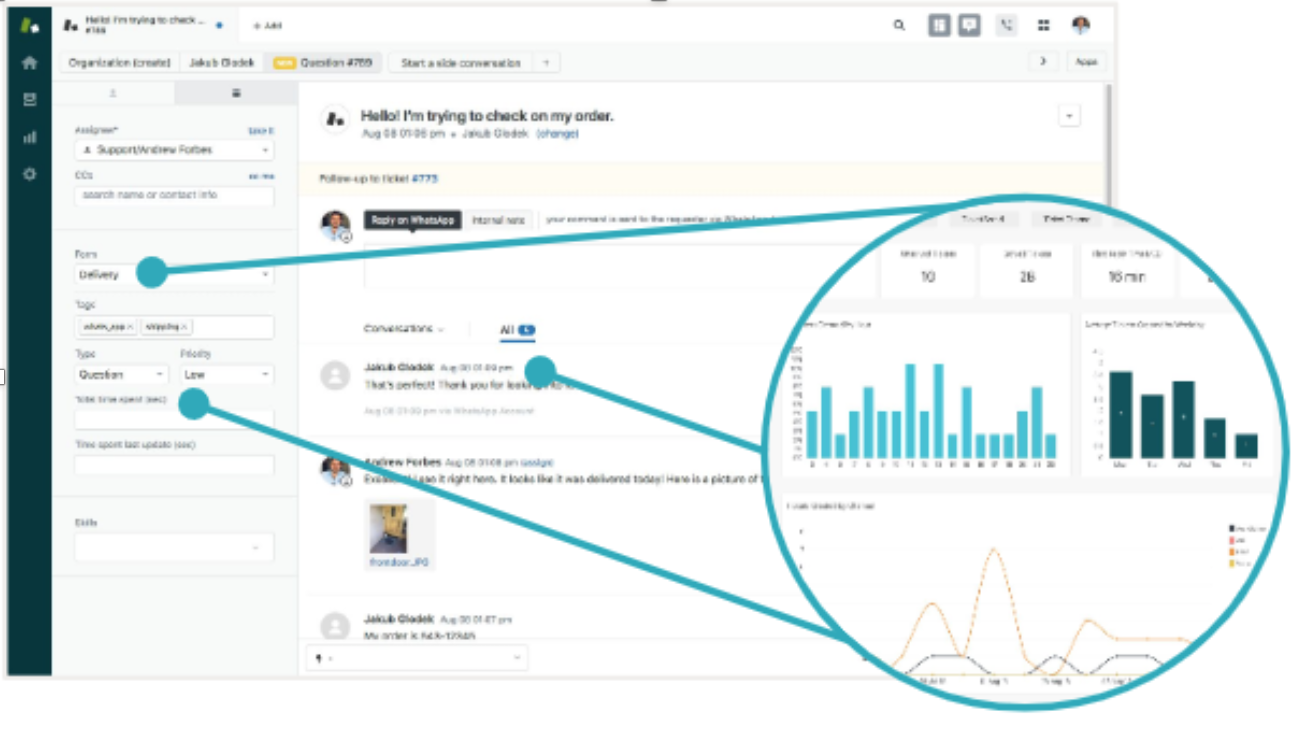Zendesk vs. Sugar Serve: Which Platform is Right for my CX Team?
Ever since the launch of Sugar Serve in 2019, customers have been asking us which Customer Experience tool is right for their business. Zendesk is a well-established player in the marketplace, while Sugar is a rising star with a unique positioning. At BrainSell, we have the expertise (and love for) both products. The following blog post will compare both platforms to help you decide which one is the best fit for your team.
SugarCRM
Sugar was founded in 2004 and provides a world-class Customer Experience platform with over 2 million users across 120 countries that touch all the customer-facing aspects of your business with salesforce automation, CRM, marketing automation, and customer service functionality. Their focus is on innovating no-touch, time-aware customer experience: creating technology that frees up time for sales, marketing, and support staff while providing crucial insights for executives.
How Does Sugar Serve differentiate itself?
- Time-Aware Customer Experience Platform
- No-Touch Information Management
- Continuous Cloud Innovation
- Lifetime Commitment to Customers
Zendesk
Zendesk launched in 2007 upon a simple idea: make customer service software easy and accessible. Today, they service 150k companies in the global marketplace. They have evolved from a service desk to an omnichannel customer experience platform offering companies everything they need to deliver outstanding service to their customers. As a consistent leader in the Gartner Quadrant, Zendesk focuses on meeting customers where they are by offering features like native telephony, web chat, chatbots, and self-service.
How does Zendesk differentiate themselves?
- Beautifully simple
- Native omnichannel experiences
- Open, flexible, and built on the public cloud
- Data-rich
- Best Total Cost of Ownership
- A community of CX Innovators
Which platform does my company need?
This is probably why you’re here, and the answer will depend on what kinds of features and integrations you’re looking for. That’s why I’m going to try and break it down by five different features: CRM integration, Agent experience, omnichannel functionality, analytics, and deployment so you can learn how each software performs.
CRM Integration
If you’re interested in a tight integration between your service and sales arms, Sugar Serve is a great option. Built upon native CRM functionality, it plugs into your Sugar Sell instance seamlessly. For legacy Sugar Professional and Enterprise clients, some of the functionality like the case module, contact, and account management may be familiar. This makes migrating to Sugar Serve simple for your agents. Sugar also offers dual licensing packages that allow Sales and Service users to easily see opportunities and cases for a 360-degree view of the customer.
Zendesk was designed first and foremost to be a simple and elegant ticketing platform with limited contact management. Through its robust app marketplace, open API, and Sunshine, Zendesk has added a variety of paths to the 360-degree customer view. This is evident in the fact that many Sugar customers already integrate Zendesk with their instances of Sugar (read about it here). Recently, Zendesk added Zendesk Sell to its lineup of products. Zendesk Sell offers a tight integration with Zendesk Support and other usability features that we’ve come to expect from Zendesk, like simple automation and native telephony.
Agent Experience
Sugar Serve is built on the philosophy of “no-touch information management,” meaning that agents should be spending less time entering and finding data, and more time on high-value work. Sugar’s product roadmap prioritizes opportunities to automate the collection, processing, and presentation of customer data. This is evident in the agent experience within Sugar Serve. When the agent’s login, they see the Service Console, where their tickets and approaching SLAs are all displayed. From the console, they can quickly drill in to see customer details, account history, and collaborate with their colleagues. This view minimizes context switching and allows for a more seamless customer experience. All the while, Sugar BPM works in the background to automate your support processes, allowing you to prioritize incoming cases based on SLA, set first response follow-up date times, and more. This allows agents to focus on resolving cases and not what is coming next.
Zendesk is designed to simplify the agent process. When an agent logs in, they see three panels. On the left, an agent would see customer information, including the history of your interactions and the help form that is relevant to their request. The ticket and all related conversations are in the middle section. This includes back-and-forth with the customer and internal chatter that is relevant to the resolution of the ticket. The right-hand panel is where marketplace apps live. These applications can help with process management, CRM integration, eCommerce orders, time-tracking, engineering escalation, and more. Support processes are managed through a combination of macros, triggers, and automation that don’t require a programming degree to setup.
Omnichannel Functionality
Sugar Serve offers several channels for support, including email and self-service, The Sugar Serve Self-Service portal allows customers to search for help, reducing the cost of service by deflecting cases. Sugar’s open API and marketplace makes it easy to add other channels such as webchat and telephony. Sugar Integrate also makes it simple to integrate with our vital business systems for a true 360-degree view of the customer.
Zendesk is built to handle multiple channels compiled within one simple agent interface. These simple, yet powerful tools make it easy for customers to engage with your business; however, they get to choose! These channels connect for seamless conversations, which improves agent productivity and allow customers to interact with you using email, voice, chat, self-service, social, and more. The results speak for themselves. In Zendesk’s annually published Zendesk Benchmark report, users of Zendesk’s omnichannel support offering saw a 16% decrease in the first time to reply, and a 31% lower resolution time. These metrics lead to higher CSAT (customer satisfaction) and agent productivity (agent productivity decreases costs).
Analytics
Sugar Serve comes out-of-the-box with Sugar’s powerful reporting tool, which makes querying your data quick and easy. Also, they have provided some incredible time-aware reports that come stock with every purchase of Sugar Serve. These reports include average time to first response by agent, first response Sla success Rate, Average difference from follow-up date my week with an agent, and more. One of the most common reporting challenges that we come across is that customer experience reporting is good at showing your data as it looks today, but not good at showing you what changed in your data. Using SugarBPM, Sugar Serve can track important changes to tickets and serve them up to Service Leaders in a way that is easily digestible. Furthermore, with the addition of Sugar Discover, you can use your service data to look at trends and get AI-powered insights.
Zendesk Explore is Zendesk’s native reporting tool that helps users easily extract Zendesk data to measure and improve your customer experience across channels. Explore comes with stock dashboards for each channel to measure commonly reported support metrics. Also, explore can analyze custom fields (included fields updated via the API) and native data using a drag and drop report editor – no SQL required! Explore helps support teams to improve efficiency, optimize channels, and understand customer interactions.
Deployment
All Sugar products are built on AWS native services, not just for their world-class hosting capabilities, but because Sugar’s partnership with AWS allows them to deliver innovation at tremendous economies of scale. With a fast-paced quarterly release cycle – we should expect to see Sugar Serve scale up very quickly in functionality and usability.
If your business has security concerns or prefers to host privately, Sugar offers several flexible hosting options. While the most innovation comes from the Sugar Serve in the cloud, service functionality is still available for self-hosted versions. However, cloud hosting helps reduce IT overhead and the need for painful upgrades and opens the door for faster-paced innovation, UI updates, and bug fixes.
Zendesk is also built on AWS and is a cloud-only offering. Its open, flexible architecture makes it easy and fast for customers to build and deploy their customer experiences. The service to watch for is Zendesk Sunshine – which allows for workflow/orchestration, profile, events, conversations, and custom objects using AWS services.
Which One Is Right for My Company?
While Sugar Serve offers tight CRM integration with Sugar Sell and some very promising features to optimize agent productivity and gives service leaders access to the data they need, Zendesk’s omnichannel design principal may be essential to your customer experience efforts. Get an in-depth, side-by-side comparison of the two solutions below.
Want some more advice? Reach out to our sales team to learn more.
Author Bio
Ali Lipman
Ali Lipman joined BrainSell in 2018. With her aptitude for building strong client relationships as well as her enthusiasm and vast knowledge about software solutions she has completely reshaped her Customer Success Management role, and continues to provide superior customer success.
View Posts
Stay in the Loop
Subscribe to get all our latest content sent directly to your inbox!
